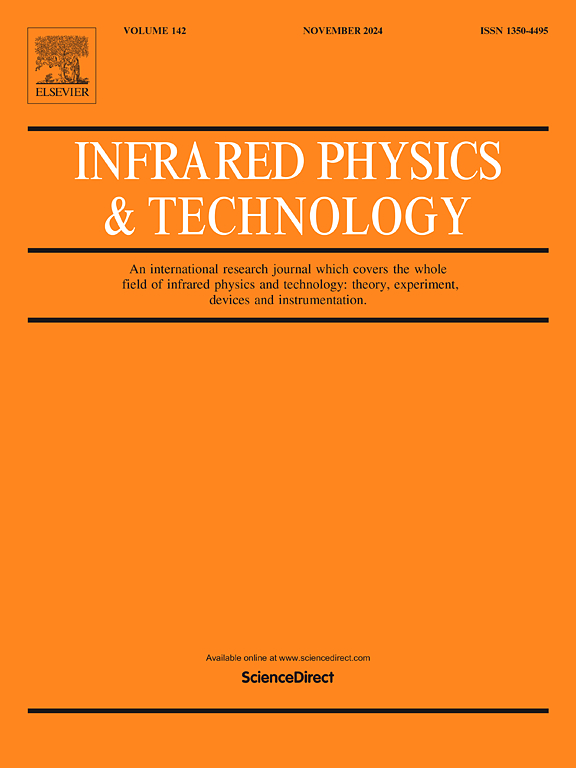Measuring the spectrum of terahertz pulses using the first-order autocorrelator based on Fabry-Perot cavity
IF 3.1
3区 物理与天体物理
Q2 INSTRUMENTS & INSTRUMENTATION
引用次数: 0
Abstract
Ultrashort terahertz (THz) pulse has a broad spectral bandwidth and essential applications in material identification and disease diagnosis. In this work, the cascaded Fabry-Perot interferometer is proposed to construct a Fabry-Perot cavity based first-order autocorrelator(FPAC) for measuring the spectrum of the ultrashort THz pulse. The FPAC is made up of two pieces of uncoated high resistivity float zone silicon wafers and can be regarded as three tandem Fabry-Perot interferometers/etalons. It can be demonstrated numerically that without any coating process to measure the spectrum of the THz pulse. Using the home-built FPAC, the spectrum of THz pulses generated by dual-color femtosecond laser filament and the THz transmission spectrum of the penicillin sodium tablet is measured, experimentally demonstrating the validity of the FPAC in THz spectrum detection. Compared to other THz spectrum detection methods, such as the Fourier transform spectrometer and THz time-domain spectral system, the FPAC has a more compact structure due to the utilization of the common-path interference setup, which can be used in narrow space for in situ detection.
求助全文
约1分钟内获得全文
求助全文
来源期刊
CiteScore
5.70
自引率
12.10%
发文量
400
审稿时长
67 days
期刊介绍:
The Journal covers the entire field of infrared physics and technology: theory, experiment, application, devices and instrumentation. Infrared'' is defined as covering the near, mid and far infrared (terahertz) regions from 0.75um (750nm) to 1mm (300GHz.) Submissions in the 300GHz to 100GHz region may be accepted at the editors discretion if their content is relevant to shorter wavelengths. Submissions must be primarily concerned with and directly relevant to this spectral region.
Its core topics can be summarized as the generation, propagation and detection, of infrared radiation; the associated optics, materials and devices; and its use in all fields of science, industry, engineering and medicine.
Infrared techniques occur in many different fields, notably spectroscopy and interferometry; material characterization and processing; atmospheric physics, astronomy and space research. Scientific aspects include lasers, quantum optics, quantum electronics, image processing and semiconductor physics. Some important applications are medical diagnostics and treatment, industrial inspection and environmental monitoring.

 求助内容:
求助内容: 应助结果提醒方式:
应助结果提醒方式:


